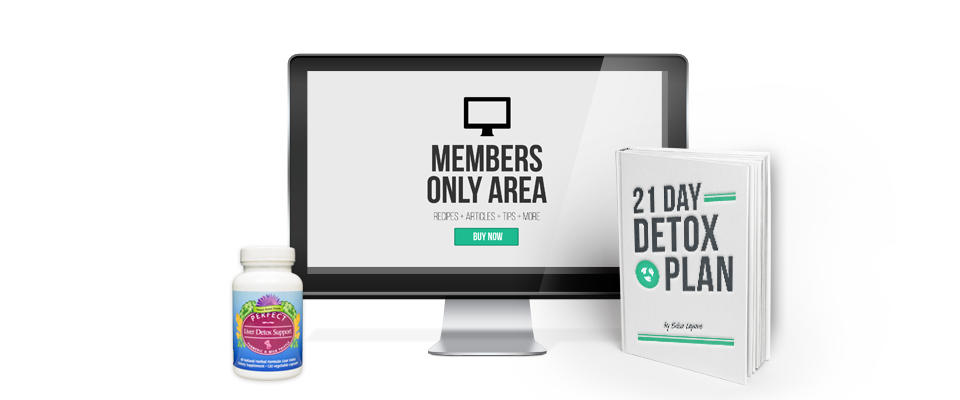My Message is Simple: Count Chemicals, Not Calories
Start reading ingredient labels and avoiding products with chemical and artificial additives, flavorings, preservatives, and sugars. You’ll be well on your way to a clean diet and a shopping cart detox with this one simple extra step: read your labels. Don’t let the manufacturers trick you into spending your money on a product that doesn’t live up to its health claims. Start counting those chemicals, and watch your health and vitality improve.
Where are the Chemicals?
Chemicals are everywhere that we are. With 85,000 new synthetic chemicals developed in the last 60 years, it’s hard to avoid them completely. They are not only in our food, but also in our water, body care products, packaging, air, oceans, streams, river, and wild life. And, sadly, they are in us – all of us. Toxins enter our bodies from our environment, including our food supply, and are stored in our fat and muscles. Some sea mammals at the top of their food chain have levels so high that they are actually qualified as toxic waste under US law!
How Toxic are We?
The really bad news is that of the 85,000 new chemicals developed in the last 60 years, a whopping 90% of them have never been tested for their effects on human health. More than 9,000 of these chemicals are food additives. Scientists currently estimate that humans carry at least 700 toxic chemicals in our bodies that have not been studied. Most of these toxins are Persistent Organic Pesticides such as PCBs and Dioxins. Even though they’ve been banned from the US since the 1970s, they still are still prevalent in our food supply (persistent!). Many new chemicals, such as BPA, phthalates, and flame retardants (PBDE) have entered our food supply and are also contributing to our bodies’ chemical burden.
How are the Toxins Entering Our Bodies?
Food is a major source of toxin exposure. Americans eat about 14 pounds of food additives a year. In addition to the artificial colorings, preservatives, flavorings, emulsifiers, antimicrobials, and conditioners, we consume on average 120 pounds of sugar and eight pounds of salt. Our food supply is contaminated with pesticide and hormone residue, plasticizers from packaging, and numerous additives. Our diet is a great place to start when we’re moving toward a cleaner lifestyle. It’s easily in our control, and it has a profound impact on our health.
Are We All Toxic?
Yes, but we’re not all equally toxic. Each individual’s body burden of chemicals varies depending on his or her lifestyle, work, diet, and genetic ability to detoxify. Diet is one place we can control our intake of chemicals. This doesn’t mean an extreme eating plan or avoiding all processed foods, but it means waking up to what it is exactly that you’re eating. Using your new mantra you can start counting chemicals to choose the truly healthiest foods available to you and your family. Chemicals are hard to avoid, but our food is a great place to start.
How Did Unsafe Food Additives Get into Our Food in the First Place?
56 years ago congress passed a law allowing an approval system for food additives known as Generally Recognized as Safe, GRAS for short. The GRAS concept allows for companies to approve chemicals on their own without FDA approval or review. All that is required is a company’s ability to show evidence that the substance is generally recognized as safe. Sometimes this is no more than one person in the company publishing it in a newsletter. (Thankfully, there is an exception for food dyes. Colorings cannot use the GRAS status and need FDA approval, but still need to be avoided due to many studies showing they are carcinogenic, cause hyperactivity, and have negative effects on behavior!)
Take Nutra Sweet, aspartame, for example. Although several rat studies have linked aspartame to leukemia and tumors, industry sponsored studies allowed it to receive a GRAS status. Many consumers attribute headaches, dizziness, digestive complaints, and changes in mood to aspartame consumption. A 2010 study published in the American Journal of Clinical Nutrition linked aspartame consumption to pre-term labor. Aspartame should be avoided until more high quality studies by independent scientists prove its safety definitively.









 Erica LePore is a Naturopathic Doctor, a 2000 graduate of Bastyr University in Seattle, WA with a B.A. from Boston College. For over 20 years, Dr. LePore has guided over a thousand patients through a science-based detoxification program developed through her research and experience. Her patients have been amazed by the results achieved by following Dr. LePore’s detox plan. People of all ages (18-85) have achieved numerous health transformations including improvements in body weight, cholesterol, chronic fatigue syndrome, fibromyalgia, gluten intolerance, sleep disturbances, indigestion, GERD, arthritis pain, headaches, skin conditions, and menopausal and premenstrual symptoms. She continues to teach annual detoxification workshops in her hometown of Wakefield, RI.
Erica LePore is a Naturopathic Doctor, a 2000 graduate of Bastyr University in Seattle, WA with a B.A. from Boston College. For over 20 years, Dr. LePore has guided over a thousand patients through a science-based detoxification program developed through her research and experience. Her patients have been amazed by the results achieved by following Dr. LePore’s detox plan. People of all ages (18-85) have achieved numerous health transformations including improvements in body weight, cholesterol, chronic fatigue syndrome, fibromyalgia, gluten intolerance, sleep disturbances, indigestion, GERD, arthritis pain, headaches, skin conditions, and menopausal and premenstrual symptoms. She continues to teach annual detoxification workshops in her hometown of Wakefield, RI.


